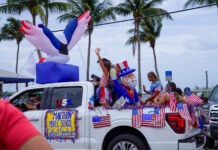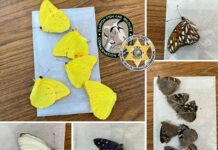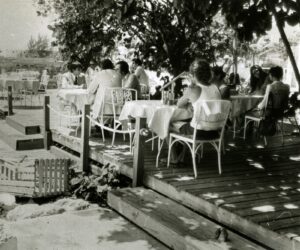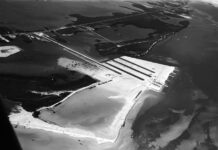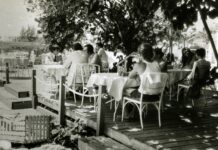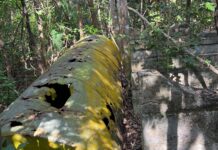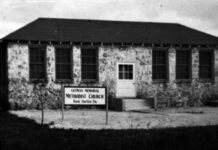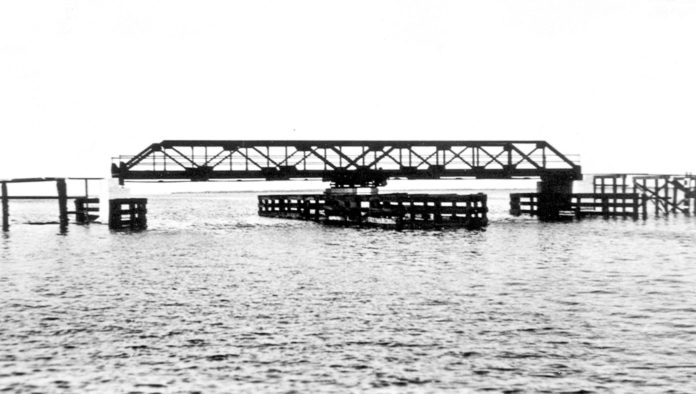
Sept. 1, 1854, was a Friday. It was also the day George Whiting Allen was born. The Allen family would move from Jacksonville, Florida, where George was born, to Key West. George was sent to the family’s Ithaca, New York, home to attend school.
A young man of 14, he returned to Key West in 1868, where he would grow up to leave a substantial footprint on the historical record. Among his accomplishments, Allen served as a Florida state senator from 1878-1884. Leaving politics, he turned to banking and, in 1891, organized and became the first president of the First National Bank of Key West. William McKinley, elected the 25th president in 1897 (and assassinated when two bullets fired at close range struck him in the belly in 1901), appointed Allen Key West’s collector of customs. It was a post he held until 1913.
In 1895, a decade before Henry Flagler began making railroad tracks across the island chain, Allen gave a speech advocating the necessity of a road to bridge mainland Florida and Key Largo. Before a road ever appeared, Flagler’s men began to survey the right-of-way for the Key West Extension of his Florida East Coast Railway. When the train arrived, it altered the landscape of the Florida Keys and the island chain’s culture.
Before daily rail service between Key West and the mainland was established, these islands had been strictly a boating culture. For Upper Keys farmers, the train presented an opportunity. The fruits of their labor had always been shipped to east coast markets like Philadelphia and New York via the Atlantic Ocean. Boats, however, were not the most reliable form of shipping, especially for cargo with a limited shelf life. On any given trek from farm to market, one-quarter of the shipment would spoil in transit.
Should unfortunate weather patterns develop or, in a worst-case scenario, there was a shipwreck, entire shipments could be lost. The benefit of the Over-Sea Railroad was that it offered a significantly quicker delivery schedule with a substantially higher degree of reliability. The problem, for farmers, in particular, was how to transport their crops, not to the docks as they had done for decades, but to the packing houses becoming established near the line of the railroad.
While the first train arrived in Key West on Jan. 22, 1912, daily service had been established between Miami and Knights Key, at the foot of today’s Seven Mile Bridge in 1908. Once the train began roaring up and down the Upper and Middle Keys, pioneer life began to transition away from the long wooden docks extending from the edges of the islands to the railroad tracks stitched across the interior of the island chain and delivering conveniences like mail, ice, sundry goods, friends and family on a daily basis.
In 1908, Upper Keys residents asked Monroe County to fund road projects that would enable better access to the train. The county responded in 1917 when it issued $100,000 in bonds to build roads on Key Largo and Big Pine as well as a bridge linking Stock Island to Key West, but no bridge linking the Keys to the mainland.
In 1919, lobbyists supporting the Miami Motor Club also worked to establish a road linking the mainland to the Keys in an effort to provide their winter tourists with access to additional “suburban” fishing grounds. It was 1922 when Monroe County officials allocated $300,000 for road projects that included work in the Lower Keys and on Key West but also helped to create better access to the railroad for Upper Keys farmers.
County monies were again allocated for road projects in 1926. This time, Monroe County issued a more significant investment in the project, a $2.5 million bond for projects that included the construction of a wooden bridge connecting Little Card Point (on the mainland side) to the existing road that had been built on North Key Largo.
On the Dade side of the county line, commissioners agreed to finance 11 miles of road that would link Florida City to what would become the Card Sound Bridge at Little Card Point. The original bridge was designed as a swing bridge to accommodate both automobile and boat traffic. When a boat wanted to pass through the waterway, the bridge tender would come out of his house, walk out to the middle of the bridge, and begin to physically crank the bridge open, turning and turning until the bridge began to swing open.
In September 1926, the Great Miami Hurricane devastated the city but also washed out the Card Sound Bridge. According to Fern Butters, who would open a small motel and restaurant with her husband on North Key Largo in December, the Card Sound Bridge reopened in November. The repaired bridge had been raised several feet to help combat any future washouts. As for George Whiting Allen, who first called for a road linking mainland Florida to the Keys in 1895, he would never see the idea come to fruition. He passed on May 30, 1922.
